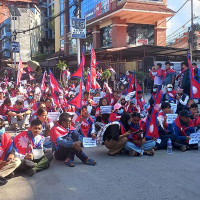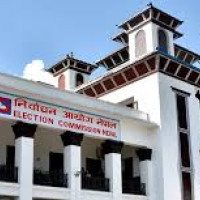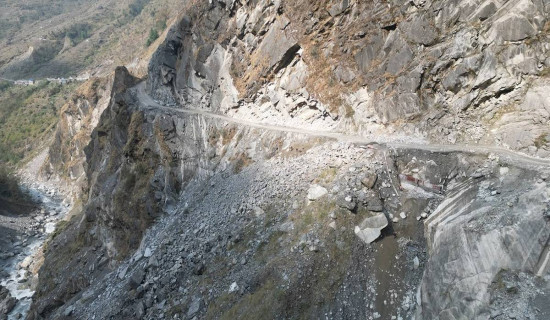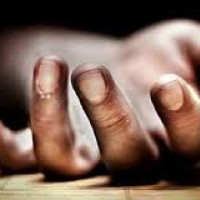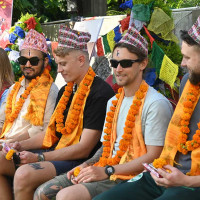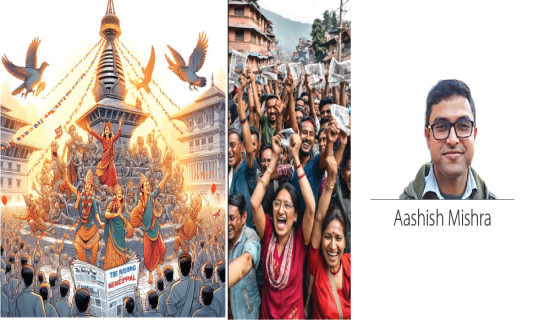- Saturday, 25 October 2025
Dashain: Tranquil, festive and drenched this year
Kathmandu, Oct. 9: Dashain is traditionally viewed across Nepal as an occasion for relaxation and celebration. Even if they do not observe the festival religiously, people use it to take a break from work and seek the comfort of family. That is why many who live and toil in Kathmandu year-round leave the capital on Dashain and return to the cities and villages where their parents and relatives reside.
This year too, more than 800,000 people left Kathmandu Valley for various destinations till the seventh day of Dashain on October 2, according to the Kathmandu Valley Traffic Police Office (KVTPO). However, when accounting for individuals who possibly left on the eighth and ninth day to reach home for Bijaya Dashami, the day to receive the Tika, estimates by the transport entrepreneurs suggest that the number of departees could be as high as 2 million. This number does not include those who left the Valley by air.
This leaves Kathmandu rather empty during the festival, considered the biggest in the nation. “Empty and peaceful,” said 45-year-old Bimala Khadka. A resident of Baneshwor, she feels Dashain offers the Valley, one of the most populated parts of the country, a chance to breathe. “Look at the streets, the markets and the squares; they are so calm and tranquil. We finally have a break from all the chaos and cacophony,” she said.
But where she finds tranquillity, others find boredom. Brothers Aavesh and Aadesh Thapa, who originally hail from Okhaldhunga, did not go home this year because the death of a relative cancelled Dashain in their family. So, they spent the festival in Kathmandu and in their words, found it quite boring. “It’s so lifeless,” Aavesh said. “Made more so by the incessant rains this year,” he added.
However, while Kathmandu does certainly slow down during Dashain, it may not be fair to call it “lifeless.” The localities, particularly in the old settlements, hold many grand celebrations during the 15 days from Ghatasthapana to Kojagrat Purnima to mark Dashain, or its Tantrism-focused Kathmandu counterpart Mohani, as well as their indigenous festivals.
In Hanumandhoka Durbar Square, a grand ceremony dating back to the time of the monarchy is held to ‘bring in’ the Phulpati on the seventh day while the Taleju Temple is opened to devotees for a single day on Maha Nawami, the ninth day of Dashain. In Hadigaun, the famous ‘Hadigaun ko Jatra’ starts on the second day after Bijaya Dashami. In Bhaktapur, the Kumari is taken around the city for people to worship. Also, the Khamye Jatra is held amidst great fervour and excitement.
In Lalitpur, the ancient town of Khokana celebrates its native Sikali Jatra instead of Dashain. In Bungamati, Machhindranath’s sacred sword is brought out of storage and taken to a place named Khwaycha amid a procession.
The town also celebrates the Nande-Kunde Jatra to mark the arrival of Goddess Manakamana from her temple in Gorkha to Bungamati.
Meanwhile, inside Lalitpur’s core city, not only the people but also the gods seem to relish the arrival of Dashain or Mohani.
The festival begins with the beginning of the city’s famous Ga Pyakha. This year too, the masked dance featuring performers dressed as the eight mother goddesses (Astamatrika) Brahmayani, Maheshwori, Kumari, Vaishnavi, Barahi, Indrayani, Mahakali and Mahalaxmi along with the traditional Newa patron gods Bhairav, Simhini, Vyagrihi, Vaishnavi and Kumar began on Ghatasthapana.
According to Shivesh Sharma, local youth and one of the pujaris of the Keshav Narayan Temple inside Patan Museum, the priests of Taleju are supposed to have first taught people the Pyakha when it was started by King Srinivas Malla in the 17th century. That is why, on the day of Phulpati, the performers dance throughout the ceremony of Dya Kwaha Bijyakigu when the Taleju Bhawani, as well as Lichhavi-era goddess Shreemanmaneshwori are brought out of their main sanctums and carried to their Dashain abodes inside the Mul Chowk, south of the Patan Museum.
On Nawami, the nine Gan Kumari, representing the nine forms of Durga, along with Ganesh and Kumar are worshipped in a secret ceremony in the eastern wing of the old Lalitpur palace. The Paya or the Khadga (sword) Jatra is also held on this day.
On Dashami, Goddess Taleju is taken back to her temple while a Jatra for Goddess Shreemanmaneshwori is held. Another dance, the Gathu Pyakha (Navadurga Dance), arrives in Patan from Thecho seven kilometres away. This year the dance celebrated a special duodecennial festival.
On this day, the special Layaku (Palace) Paya also comes out from Taleju. The Paya of Nawami is the Thasimala Paya.
Dashain drenched
However, the heavens poured water on the celebrations this year – quite literally. A low-pressure system from the Bay of Bengal caused it to rain throughout Dashain. It began raining on Monday and, except for occasional breaks, did not stop the whole week. This caused many to have a soggy Bijaya Dashami.
The rain was particularly heavy on Wednesday, Thursday and Friday, according to the Meteorological Forecasting Division (MFD). On Thursday, Palpa recorded the highest rainfall in the country with more than 210 millimetres of rain falling in less than 24 hours. Similarly, on Friday, Tanahun experienced the heaviest rainfall at 223 millimetres.
And with this incessant rain came tragedies. Over the week, rain-induced disasters claimed the lives of five people and injured four, as per the National Disaster Risk Reduction and Management Authority (NDRRMA).
On Thursday, a 65-year-old man died in Makwanpur after being swept away by the flooded Kalika River. NDRRMA’s records show that he was returning to his home in Jate, Kailash Rural Municipality–3 from the local market when he was taken by the river. Similarly, a 41-year-old woman died in Gulmi after being swept by the swollen Arauti River. She was on her way to her maternal home to receive Dashain Tika from her elders.
On Friday, three people from the same family died in Kathmandu after a landslide buried the zinc-sheet shed they were living in in Chandragiri Municipality–2. As per the ward office, the deceased were 52-year-old Raju Shrestha, his wife Rekha Shrestha and his two-year-old daughter.
The same day, a landslide in Surkhet buried a scooter and injured its driver and pillion rider. Likewise, another landslide in Khar, Chumanuwri Rural Municipality–6, buried three houses, injuring a woman and a man.
MFD forecasts light to heavy rain for the coming week as well.
Murderous Roads
Road accidents also claimed dozens of lives during Dashain.
From October 1 to Friday, a total of 41 people died on roads and highways across the country. Of them, 18 died in Bara alone in the bus accident that occurred near Bridge No. 3 in Jeetpursimara Sub-Metropolitan City the day after Bijaya Dashami on Thursday.
The country sees numerous accidents every year during Dashain owing mainly to bad road conditions, vehicles carrying a greater number of passengers than they can safely handle and violation of traffic rules on the highways. This year was no different.
(Purushottam P. Khatri contributed reporting)


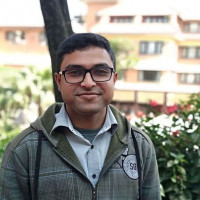
-original-thumb.jpg)
